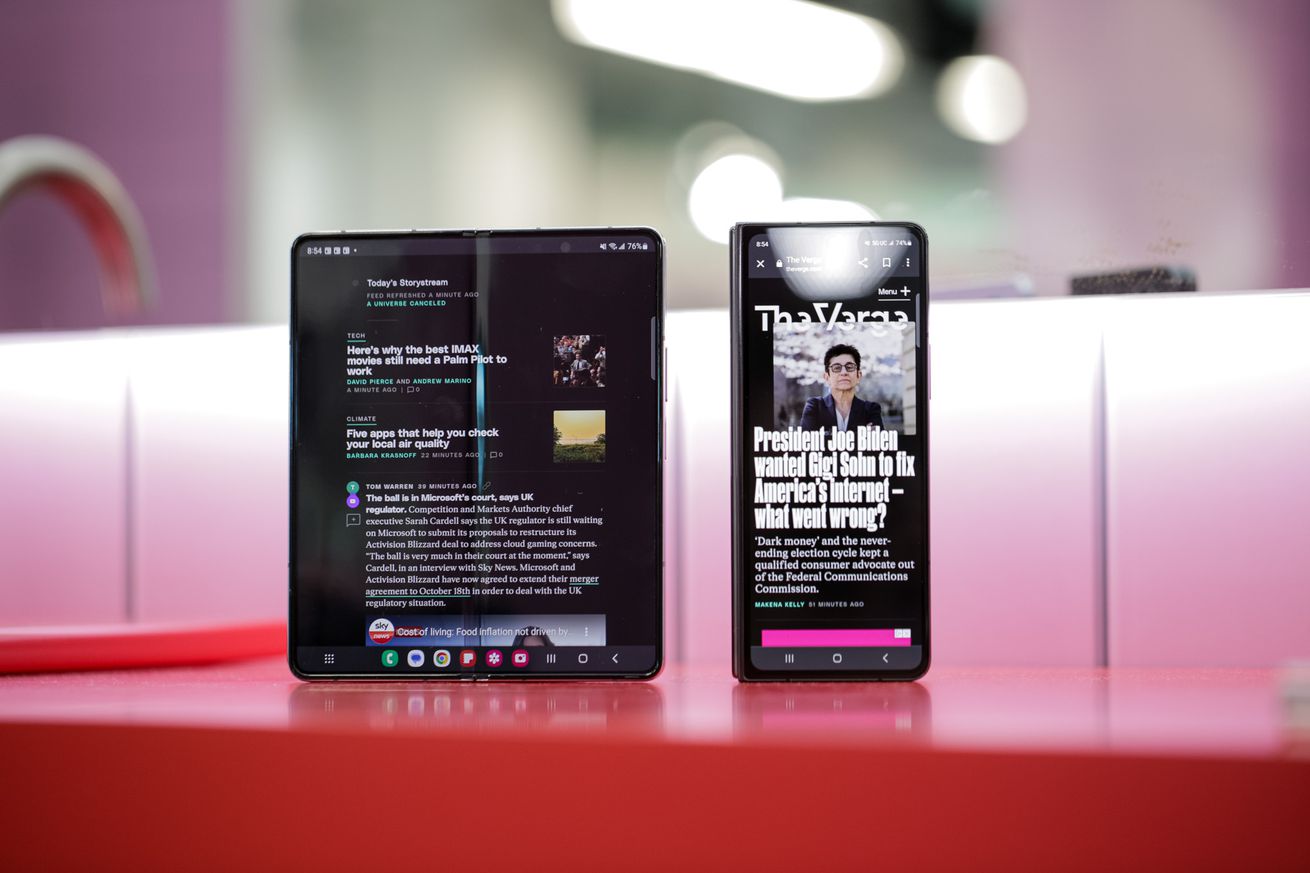
It just wouldn’t be hot foldable summer without a new ultra-flagship entry from Samsung. This year, Samsung announced its new Galaxy Z Fold 5 at its Unpacked event, and the $1,799.99 phone looks a whole lot like previous Z Folds. In fact, it’s so similar to last year’s Z Fold 4 that the biggest change for the Fold 5 may be that it’s launching with a direct competitor here in the US in the form of the Google Pixel Fold.
It was only around one month ago that Google launched its debut folding phone, and while it’s proven a valiant first attempt with good cameras and a comfier outer screen, it still lacks a bit in the software optimization department. On the other hand, Samsung has been refining its Galaxy Fold line since it took that massive first step into these unknown, foldable waters (and subsequently face-planted due to massive defects of its original model).
The Galaxy Z Folds have looked a bit same-y for a couple of years now, and the Z Fold 5 looks a whole lot like the Z Fold 4 until you close it — as its new hinge design now allows it to close flat (a feat Google managed to accomplish on its first try). But with so many of the Fold 5’s specs and features mostly unchanged from its 2022 predecessor, let’s dive into all the differences (and many similarities) on paper between the new Samsung Galaxy Z Fold 5 and the Google Pixel Fold.
/cdn.vox-cdn.com/uploads/chorus_asset/file/24809324/236733_Z_Flip_5_and_Z_Fold_5_BFarsace_0007.jpg) Photo by Becca Farsace / The Verge
Photo by Becca Farsace / The Verge
Samsung Galaxy Z Fold 5 vs. Google Pixel Fold: it feels like we’ve been here before
Just like comparing the Z Fold 4 and the Pixel Fold, the biggest difference between the Pixel Fold and the new Z Fold 5 is that Samsung’s foldable has a tall-and-skinny 6.2-inch screen on the outside with a portrait-orientated 7.6-inch display on the inside that opens like a book. That inner screen is the same size and aspect ratio as the Pixel Fold’s inner screen, but the Pixel is essentially rotated 90 degrees in a landscape orientation when it’s unfolded (a 6:5 aspect ratio vs. the Z Fold’s 5:6). The Galaxy is most inclined for productivity stuff and multitasking app usage when you open it, while the Pixel is more apt for relaxing to some tablet-like content consumption. That roomier experience is most on display with the Pixel Fold’s outer screen, which is a smaller 5.8 inches but much more usable as a standard slab phone on its own.
The things you can do on those different aspect ratios are also a major differentiator between the Pixel Fold and the Z Fold 5. We’ll have to see how the Z Fold 5 handles in our full review — which is, of course, in the works — but it’s not hard to imagine that it’ll be quite similar to the Z Fold 4’s software experience. Our own Dan Seifert went into great detail about what using that software is like and how much ground Google needs to cover to catch up.
/cdn.vox-cdn.com/uploads/chorus_asset/file/24809325/236733_Z_Flip_5_and_Z_Fold_5_BFarsace_0008.jpg) Photo by Becca Farsace / The Verge
Photo by Becca Farsace / The Verge
/cdn.vox-cdn.com/uploads/chorus_asset/file/24751356/DSCF1743.jpg) Photo by Chris Welch / The Verge
Photo by Chris Welch / The Verge
As for the more quantifiable stuff between the Galaxy Z Fold 5 and the Google Pixel Fold? There are many similarities, down to the amount of RAM, the IPX8 resistance rating, the fingerprint scanner location (it’s in their respective power buttons), the 120Hz screen refresh rates, and even the $1,799.99 price. The Pixel Fold still holds the title for being the heavier foldable, especially as the Z Fold 5 is slightly lighter and smaller than last year’s (by a minuscule amount), but its larger battery proved more unreliable than last year’s Z Fold.
We can’t tell everything from specs alone, but they sure are fun to dissect and compare. Why don’t you take a look and tell us what you think? Is this the year you jump on the foldable train, or are you still more than happy with many of us in plain old Slabsville?

Aucun commentaire:
Enregistrer un commentaire